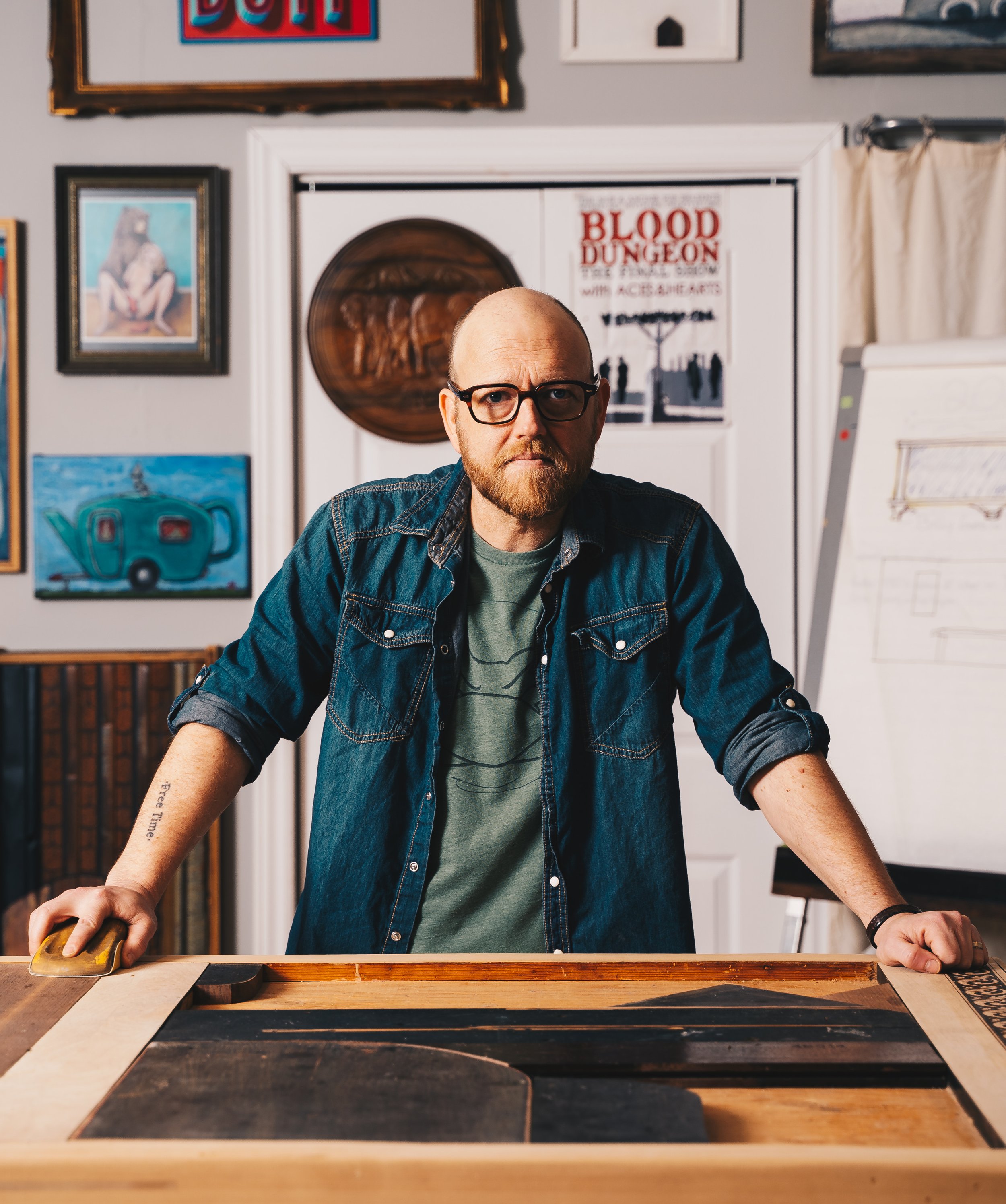The Reclamist
Photo by Stewart MacLean
A puzzle is evident when you look up close. The perimeters of the shapes are defined and easily traced with the eyes and fingertips. From the side you can see the peaks and valleys, like laying on the crust of the Uyuni Salt Flats and looking to the horizon. Up close enough to smell the wood, the structure reveals simple wooden blocks, fixed near each other. Like a puzzle, the beauty reveals itself only when you step back and the individual pieces fade away, transforming structure to art.
When you see Lenny Gallant’s pieces, transformation is evident. It is what draws you in. He is very much a benevolent interloper between states of utility and trash. The power to redirect the fate and history of an object into a container for memory and beauty is not something he takes lightly. It is what he must do on a daily basis.
“Change is inevitable.” he said, “I get to be a cog in that change. It is a privileged position to be in.” Lenny reclaims an object’s history through transforming its function and form, saving it from the fate of loss… at least for a little while.
His shop is called Birdmouse. Birdmouse is a catchy name. Familiar somehow and not intrusive when said. Just off enough to remember. I took a guess at its meaning. The dynamic of prey and predator, life and death… nature’s balance. It turns out, it is none of those. The name he chose was based on a cat toy. Coined instead to be able to freely create, allowing the pieces he makes to hold the meanings and feelings you bring. This freedom springs forth because the name does not dictate the kinds of art he produces.
Lenny took me on a small tour of the workshop. It is a simple space. The corners and walls had piles of wood, some stacked, some in the process of being disassembled. The materials come with stories. An organ from a church diverted from an intended landfill. Now in Lenny’s hands, it becomes a framed tribute to the organist. A desk that serviced the intense study of a student looking to gain their masters pivots from trash to wall art depicting mountains and sunsets.
Image submitted by Lenny Gallant
There is enough material here for the next few years. Old dressers, signs and pianos, waiting for Birdmouse to find their new purpose. All of them salvaged from folks looking to save a piece of the past for some enjoyment in the future. When Lenny first started, he drove to each location, looking for the pieces he would need. Now that he has been doing this for some time, he tells me he doesn’t have to search to salvage wood anymore. It finds its way to him. People have come to know him as an agent of transformation.
The original items inform what he creates. The materials make demands in their redirected destiny and he shapes the pieces for his art. He does not repaint or sand down to new wood. The character is left on its surface, a juxtaposition of something new that looks antique, stirring memories of things you did not take part in.
He apologized for the mess and moved past his “thinking dartboard” to show me the next project. The dartboard is an interesting element and an important tool in his work. It is used to “work things out” and provides a distraction as his mind designs.
“This is a table I’m working on.” He said, “Well… it might not be a table. I’m not sure yet. It might be a wall hanging. Tables are just wall hangings with legs.” I think that whimsy is found in all his creations, whether it is art, installations, or furniture. That twist in the novel. The pieces he puts together, you don’t see coming, and yet, the trace back seems, like the change itself, inevitable. It represents and enables the best of who we can be in our human experience. That ability to be broken and yet, make the broken beautiful. While it seemed quite organized to me, there was a layer of chaos on the top. I suppose there has to be. Can art be created without it?
I had never met a reclamist before. By Webster’s status, none of us have. It is a word that does not exist. They are not the same as a recycler. Recycling makes a new object with an original purpose. No, a reclamist, as I am told, is someone who reclaims and reuses with the intention to transform. It is a word that will remain in my vocabulary.


